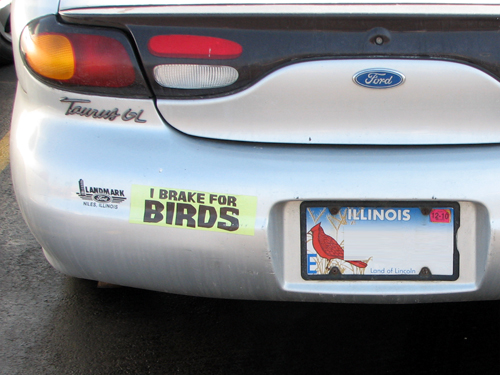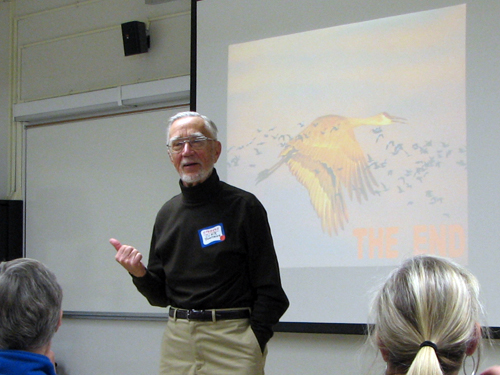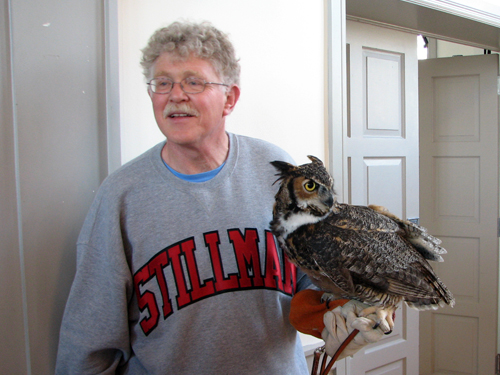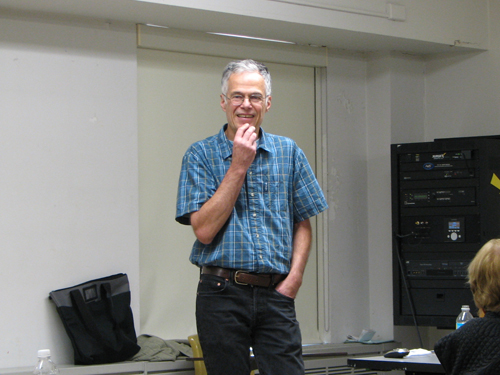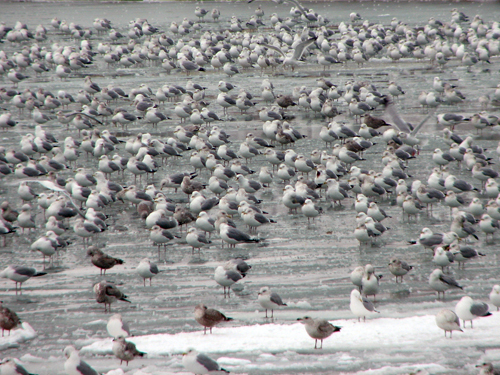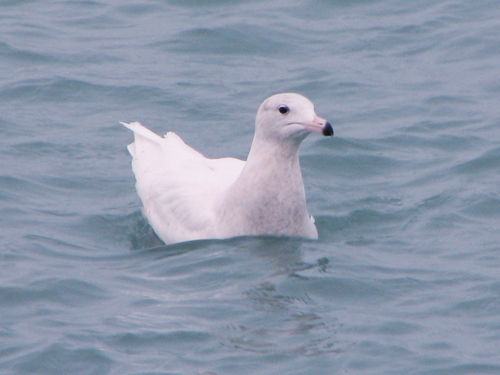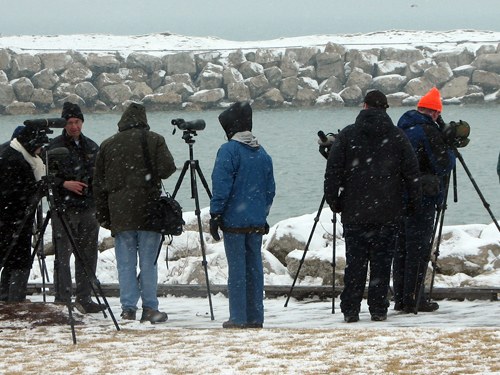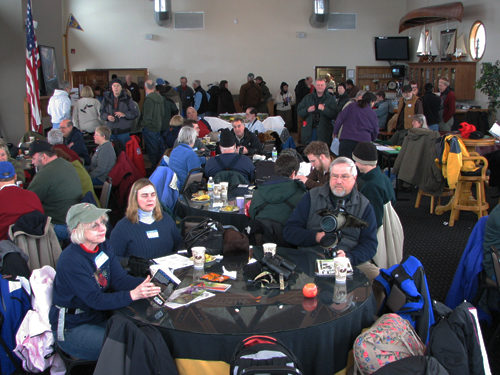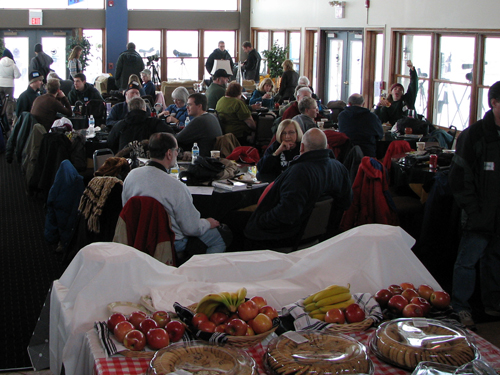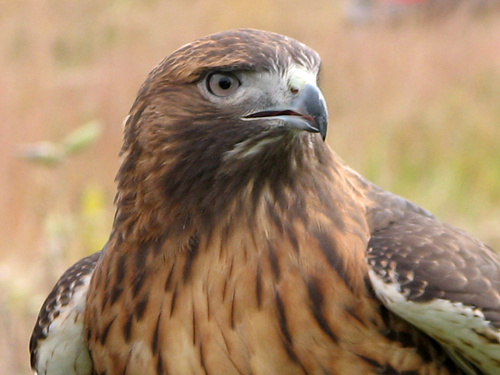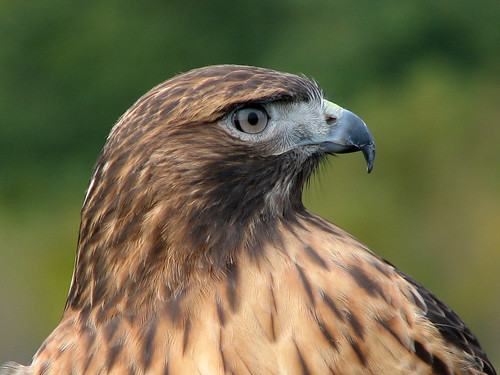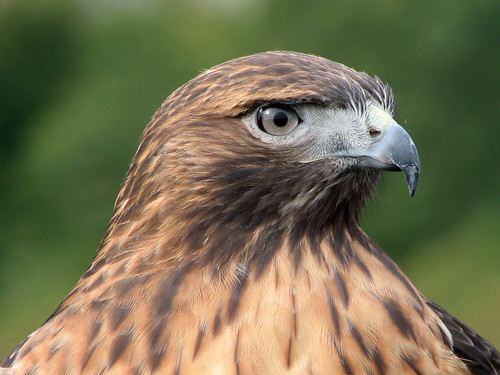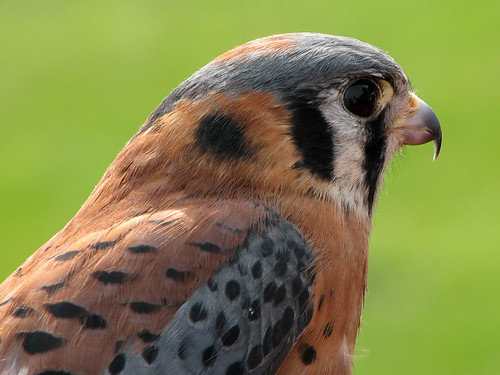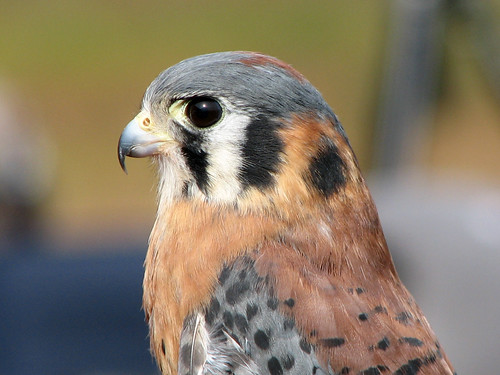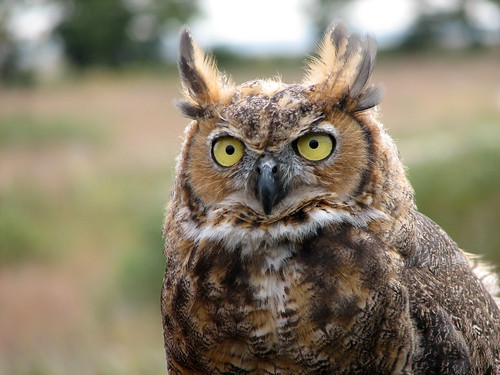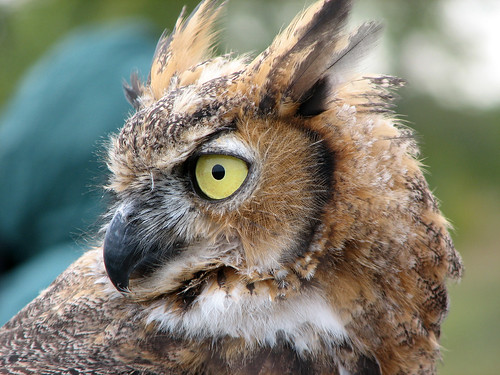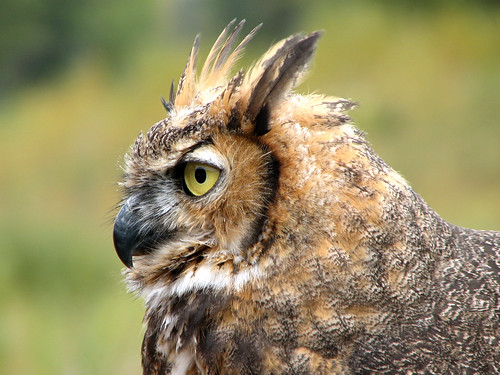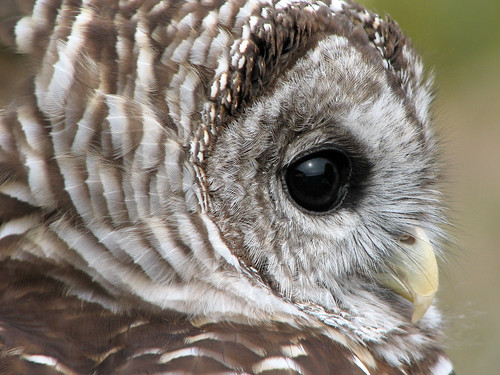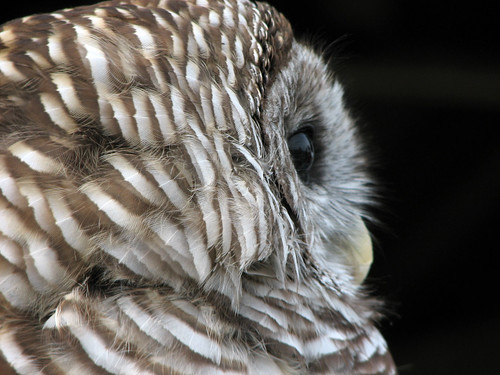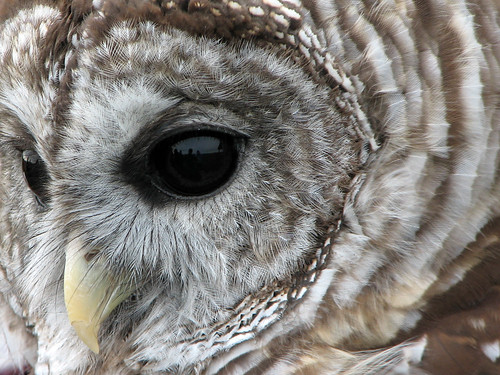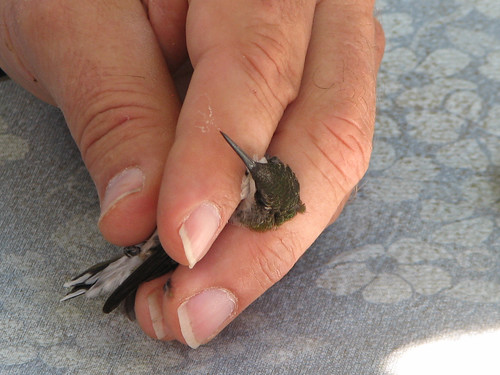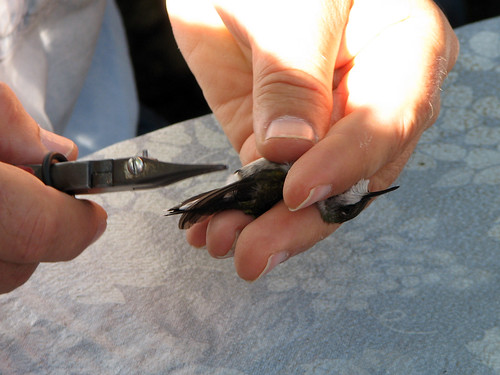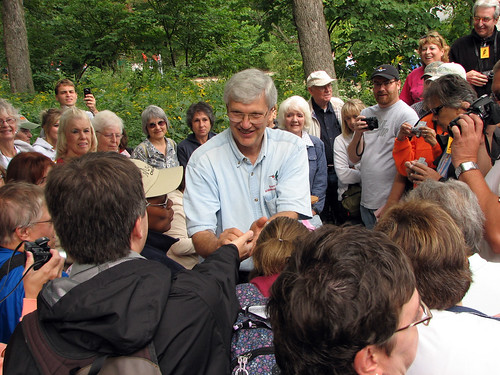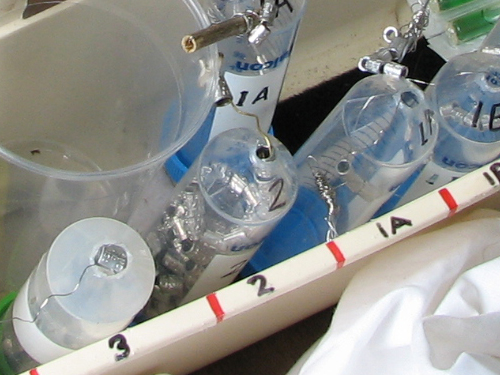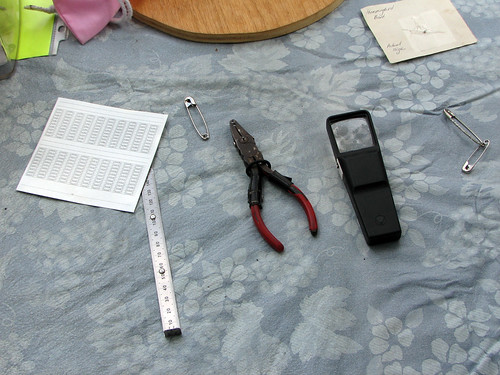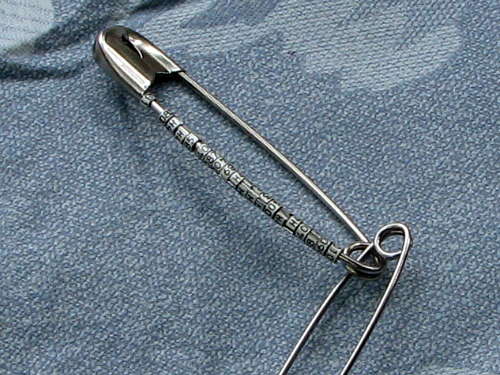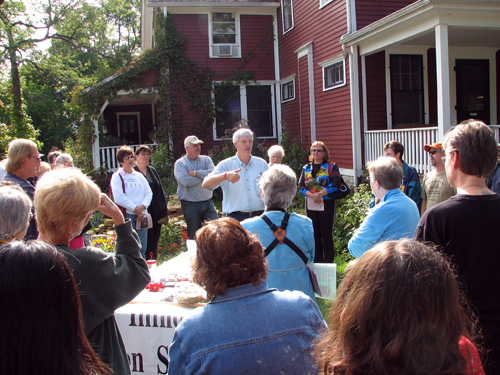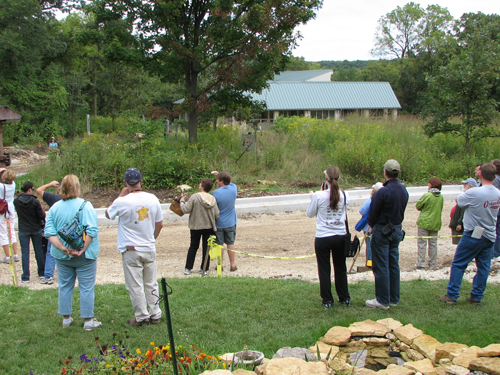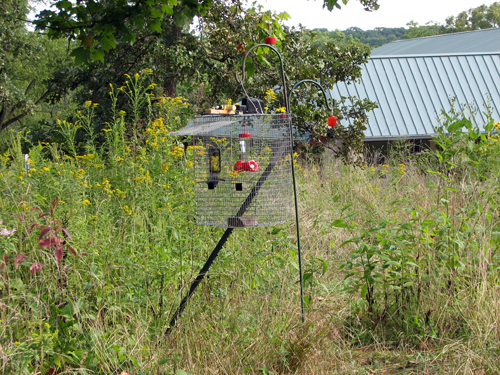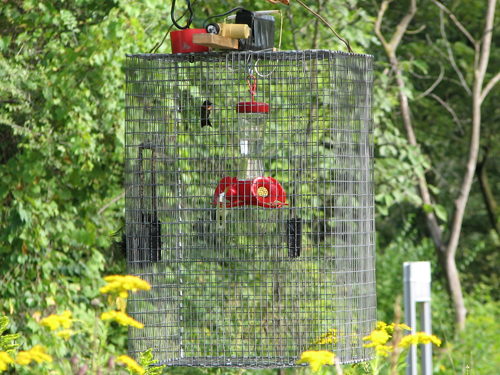Where I live now, in northern Illinois, there is only one normally occurring species of vulture: the Turkey Vulture. I see these birds flying on thermals quite often here in Lake County during the summer. In honor of International Vulture Awareness Day, taking place on Saturday, September 5th, I’ve been thinking about all the vultures I’ve had the privilege to see. These are the eight species of vulture on my life list, in random order.
White-backed Vulture
I saw this bird on a week-long trip to the Gambia in January 2007. My husband and I spent 4 days with some very experienced birders from Finland, with whom we shared our Gambian guide. We were totally out of our league with these guys, who had spent months before the trip preparing, learning the calls of the local birds and practically memorizing their Gambian field guides. We had a great time and tried our best to stay the heck out of their way. Unfortunately this is the one vulture on my life list of which I have no photo.
Turkey Vulture
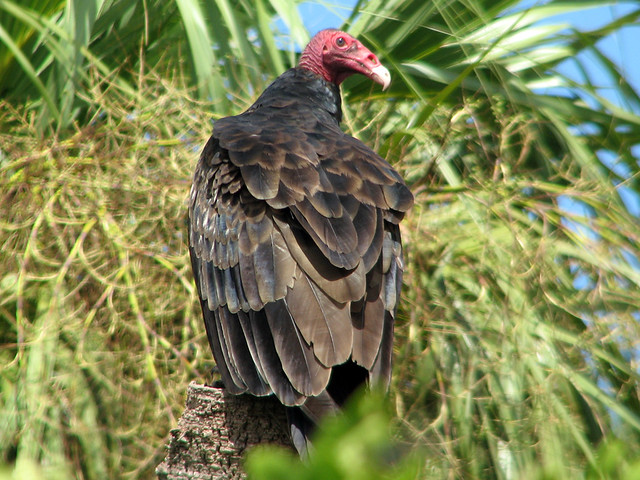
The Turkey Vultures I see here seem to love flying, because that’s all I ever see them doing. When I’ve seen these birds in Florida, it was a different story. There, TVs seem to be everywhere, hanging out in groups along the roadside or in open spaces in nature preserves.
Palm-nut Vulture
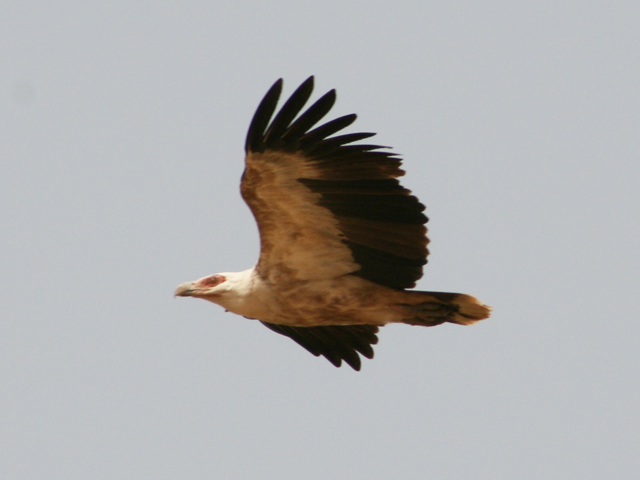
This is another vulture we saw in the Gambia. I’m embarrassed to admit I don’t remember the circumstances under which we spotted this extremely striking bird. Yes, the trip was a bit wasted on us – there was a lot of running around and nodding as we looked at the birds that were pointed out to us. We would have a different experience making the same trip today, that’s for sure.
Egyptian Vulture
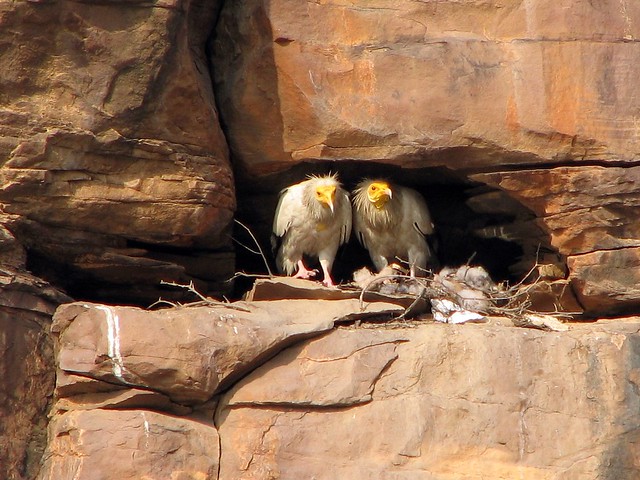
When we visited Rajasthan in March 2006, we saw Egyptian Vultures several times. We even saw them at the Taj Mahal. I remember we were starting to be interested in birds, especially since we were seeing so many that were unfamiliar to us. We saw this large bird perched on one of the outbuildings by the Taj and wondered what it could be. I took a few photos and we looked it up later – eureka, an Egyptian Vulture! [Photo is of a pair at a nest near Kota, India]
Rueppell’s Vulture
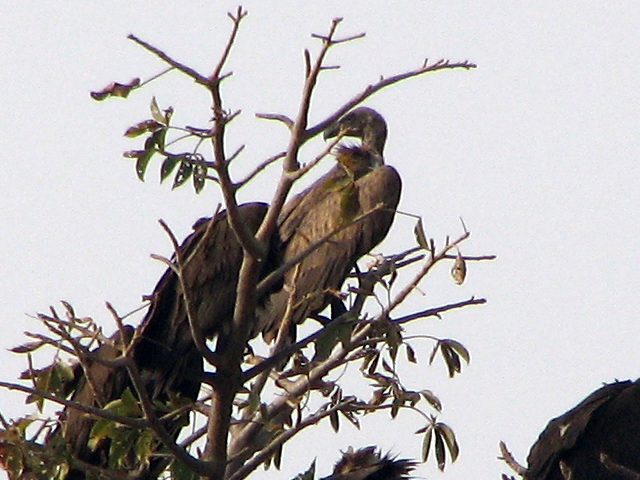
Another beautiful vulture we saw in the Gambia, near Tendaba. Unfortunately I cannot remember much about this sighting either. 🙁 Shame on me!
Black Vulture
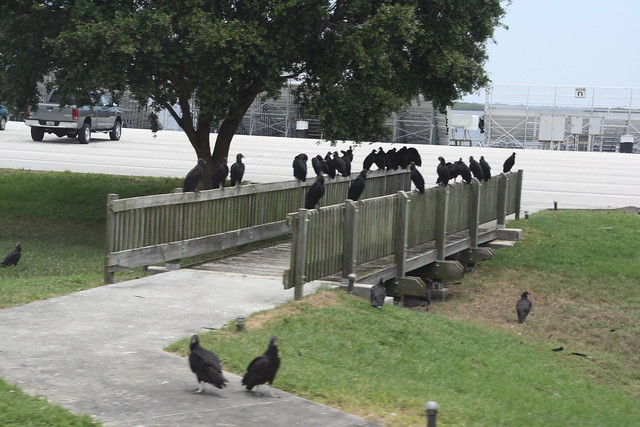
My second North American vulture is another Florida favorite. These guys also seem to hang out nearly everywhere we’ve been. On our last visit to Florida in June we spotted this large group
milling about at NASA.
Griffon Vulture
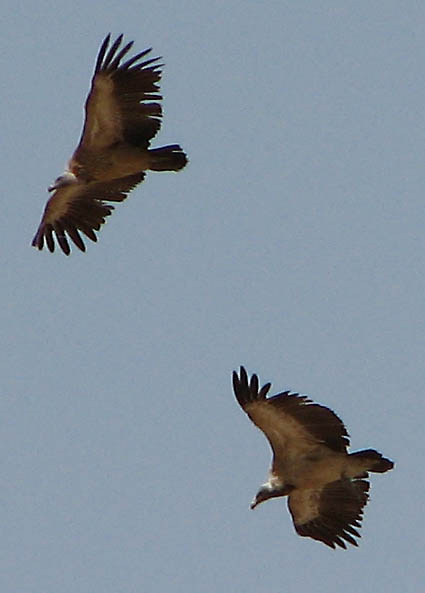
This is another bird I spotted in India. This photo was taken in Jodhpur but we also saw these birds on several other occasions during the trip.
Hooded Vulture
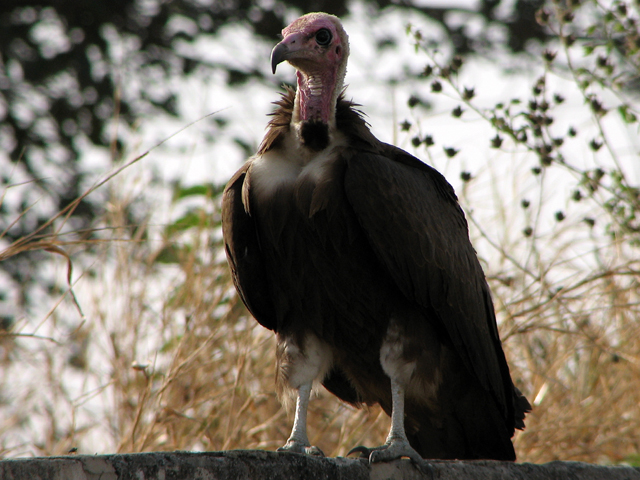
Another Gambia bird! This time I remember exactly where we were when we found this lovely. Our hotel in the coastal resort area was a short walk from the beach. The walk took us down a sand-covered alley between the backs of several other resorts, and there was trash everywhere. Besides this bird we also saw Cattle Egrets feeding on the piles of garbage and a few unlikely birds like Red-cheeked Cordonbleus and Red-billed Firefinches.
What vultures are on your life list? I’d love to hear about them, so please leave a comment!
This post is participating in the International Vulture Awareness Day 2009 Blog for Vultures. You can click on the badge below to see the other participants in this meme.
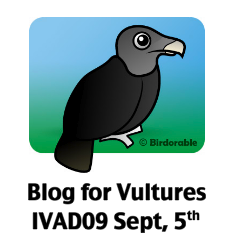
Share the birds, share the love!



